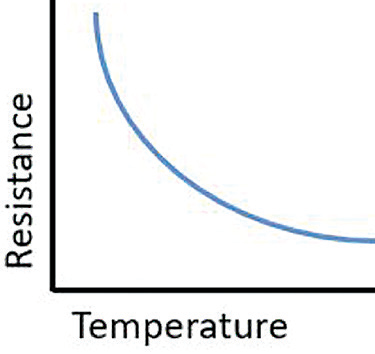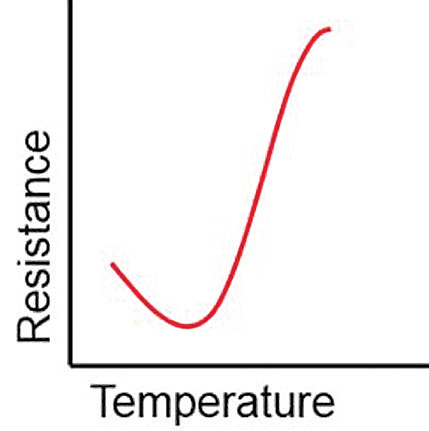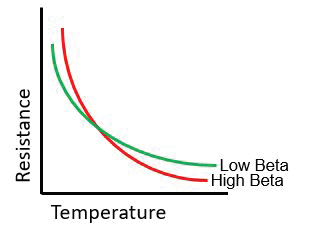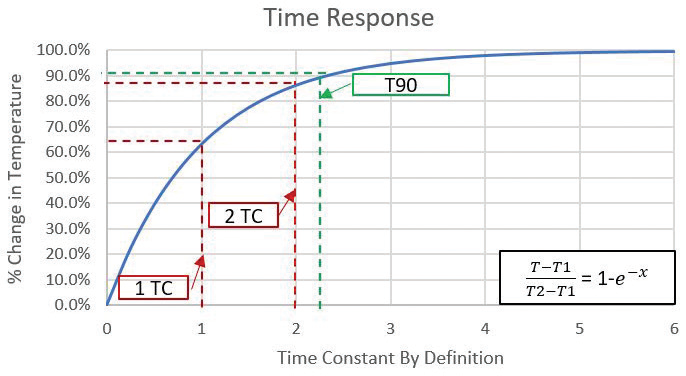A thermistor is an electronic component that displays a substantial change in resistance when there is a change in its body temperature. The term ‘thermistor’ is an amalgamation of the words ‘thermal resistor’. Thermistors are available in two types - NTC and PTC.

What are NTC Thermistors?
NTC Thermistors are a type of thermistors that possess a negative temperature coefficient. This means that where resistance drops, temperature increases (Figure 1).

Figure 1.
What are Some NTC Thermistor Applications?
NTC thermistors are useful in a range of settings and applications, including:
Temperature Measurements: A thermistor’s high sensitivity makes it an ideal option for cost-effective temperature measurement applications.
Temperature Control: It is possible to employ NTC thermistors for temperature control (on/off), with this only requiring a small amount of circuitry.
Temperature Compensation: Circuit precision generally involves some sort of temperature compensation being required. Examples of circuits that may need temperature compensation include LCD displays, oscillators, a battery under charge or some models of amplifier.
Inrush Current Limiter: When an NTC disc thermistor is subjected to a variation in power, it will experience a time lag before a lower resistance is reached. The resulting time lag can be used to limit the inrush surge current with larger parts resulting in greater lag.
Fluid Level Applications: It is possible to employ NTC thermistors to sense the presence or absence of a liquid. This can be achieved by utilizing the difference in dissipation constants between a gas and a liquid.
What are PTC Thermistors?
PTC Thermistors are thermistors which possess a positive temperature coefficient. This means that resistance increases as temperature increases (Figure 2).

Figure 2.
What are Some PTC Thermistor Applications?
Overcurrent Protection: If a fault condition arises, the PTC thermistor will heat up, prompting a change in resistance from low to very high.
Electronic Ballast Design: PTC thermistors are employed in electronic ballast systems, functioning as a time delay element when a circuit is energized.
Motor Starting: Where a PTC thermistor is installed in series with the starting windings of a single phase electronic motor, the PTC is able to function as a time delay.
Battery Management: When a rechargeable battery is fully charged, its temperature increases. This causes an increase in PTC resistance, quickly reducing the charge to a low level.
Self-Regulating Heater: A PTC thermistor is able to provide a combination of thermostat and heater in a single device. PTC resistance rises as ambient temperature increases; resulting in a power reduction to the circuit.
What are the Individual Parameters of a Thermistor?
Thermistors operate via a range of parameters. These include Zero-load Resistance Value, Beta (β) Constant, Ratio, Alpha (α), Thermal Time Constant (τ) and Dissipation Constant (δ). The function of each of these parameters is outlined below.
What is the Zero-Load Resistance Value?
The Zero-load Resistance Value represents a thermistor’s resistance value as measured at a specified temperature. This is also known as the no-load resistance value. This value is typically measured at a standard temperature of 25 °C (R25), with the measurement performed at a power level which results in negligible influence from spontaneous heat generation.
What is Beta (β) Constant?
Figure 3 displays the Beta Constant. This is the slope of the NTC thermistor’s resistance to temperature characteristic (in kelvins), shown over a particular temperature range. This is illustrated via the formula:


Figure 3.
What is the Ratio?
Ratio in this context is the ratio of a themistor’s resistance at two separate temperature points.
What is the Alpha (α)?
The Alpha represents the zero-power temperature coefficient of resistance. This is the ratio at a specific temperature, of the rate of change of zero-power resistance, with temperature to the zero-power resistance of the thermistor. In basic terms, the Alpha is the % variation in resistance per °C change in temperature at a specific temperature.
What is the Thermal Time Constant (τ)?
Figure 4 displays the Thermal Time Constant. This is the time needed for a thermistor to change 63.2 % of the total difference between the thermistor’s start and end body temperature when exposed to a step function temperature change under zero-power conditions.

Figure 4.
What is the Dissipation Constant (δ)?
The Dissipation Constant is the ratio (measured in milliwatts per °C) at a particular ambient temperature, of a change in power dissipation in a thermistor to the resultant body temperature change. Fundamentally, the Dissipation Constant represents the power needed to change the thermistor by 1 °C via self-heating.

This information has been sourced, reviewed and adapted from materials provided by Amphenol Advanced Sensors.
For more information on this source, please visit Amphenol Advanced Sensors.